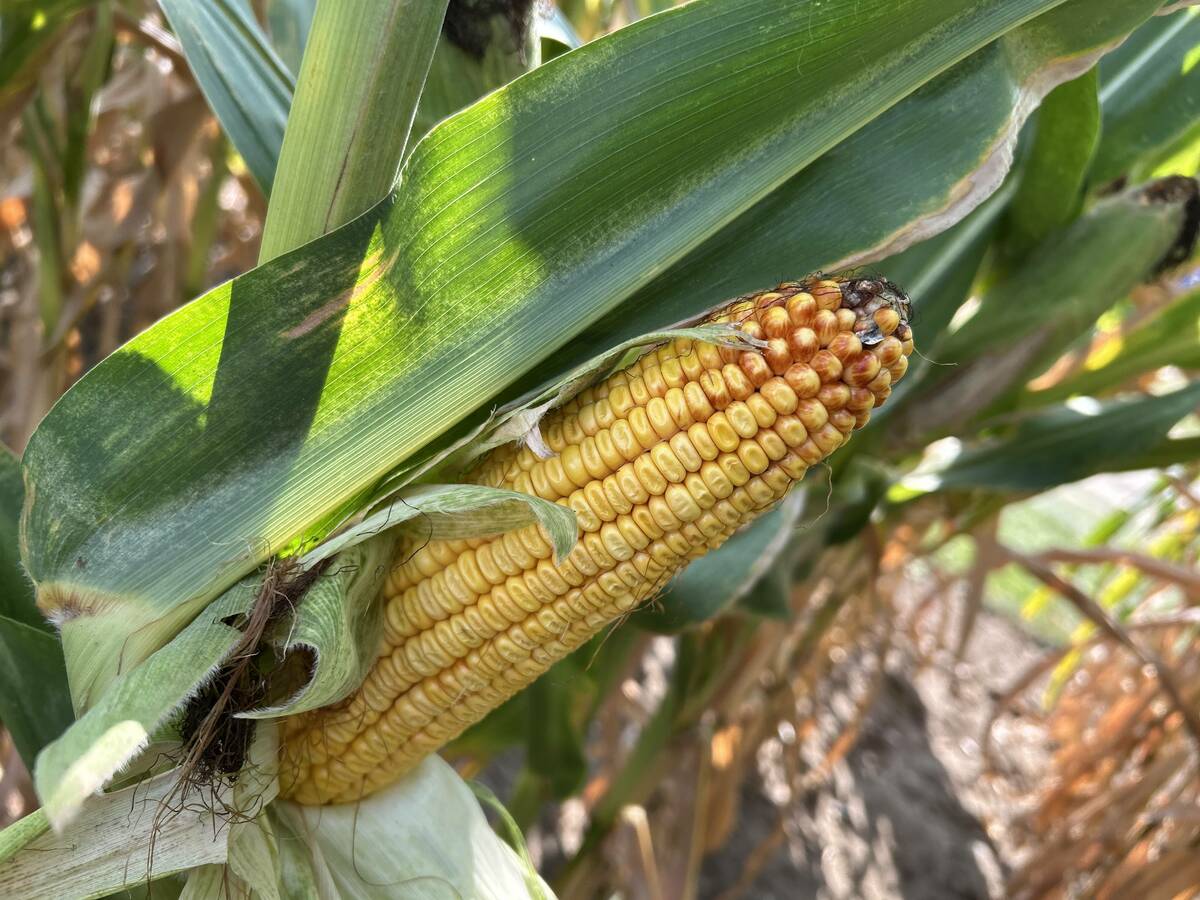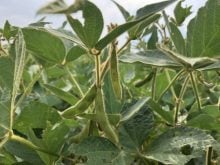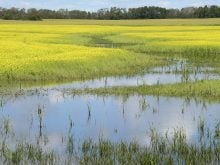The inclement season. That’s the name we chose for the many stories in this issue that convey the difficult and strange growing season farmers faced this year.
The growing season was frustrating and disappointing for many. The final result will depend on continuation of the warmer, drier weather of the past two weeks.
It is difficult to determine the scope of damage already inflicted by Mother Nature, but there are two things we know for certain: crop volume and crop quality will be reduced.
Read Also

Crop estimates show mixed results
Model-based estimates used by Statistics Canada showed the 2025/26 crop year has seen increases in canola, corn for grain, oats and lentils production while seeing dips in spring wheat, durum wheat, soybeans and barley in comparison to 2024/25.
Statistics Canada released its report Oct. 4 that showed prairie wheat production down 18.5 percent from last year and canola down 16.3 percent. The report, which collected its information from Sept. 1-9, might not have fully captured the damage from September rain but provides a good early indication of the volume that will wind up in the bin.
Some solace in the outlook can be found in commodity prices. Most are higher than in the early 2000s, the last time we had widespread weather problems.
With much of the prairie crop expected to be downgraded, farmers will welcome every extra dollar, and those who reap No. 1 crops can expect to be reasonably well rewarded.
This year’s inclement weather crept up on the Prairies. Each week brought hope of better conditions that would allow seeding, spraying, harvest. But poor weather inexorably continued.
Hail, floods, fire and violent storms are dramatic events usually followed by politicians flying into the affected regions for photo opportunities, and then by national news coverage and debates in the House of Commons. The public’s attention is focused on emergencies and when there’s enough attention, help is usually not far off.
But the problems this summer are better described as a steady hammering rather than a flash emergency.
They began with a wet spring that prevented farmers from seeding a large number of acres. The Canadian Wheat Board estimated that eight to 12 million acres of farmland were left unseeded on the Prairies.
When the rain continued through June and into July and August, many of the acres that had been seeded were lost to excessive moisture. Still, hope remained that there would be enough good weather at harvest time to salvage what was left.
But that was not to be, although recent warm weather has extended harvest and will hopefully enable farmers to get everything out of their fields.
The Peace River district, meanwhile, was having its own problems. Lack of rain left large parts of the region with sparse crops and many farmers have little to harvest. The situation there too has garnered little attention, largely because of the regionalized nature of the problem.
Has this year developed into a crop year crisis or has Mother Nature provided enough autumn benevolence to make a difference? When and under what circumstances does it become clear that additional financial help is needed?
This year might be another test case for the adequacy of existing business risk management programs. With crop volume and quality down, and excess moisture likely to be a problem into next spring, no farmer will be satisfied with slow program payments that arrive two years after they are needed.
There has been targeted aid for those with unseeded acres, but governments have to devise better ways to meet farmer needs in the face of widespread weather-related problems.
Crop insurance will likely be part of the answer, and in fact it will play a big role this year in controlling the financial damage many producers would otherwise face. But it shouldn’t be the only program that provides farmers with the financial stability to continue operations.
Maybe this inclement season will provide motivation for improvement.
Bruce Dyck, Terry Fries, Barb Glen and D’Arce McMillan collaborate in the writing of Western Producer editorials.














